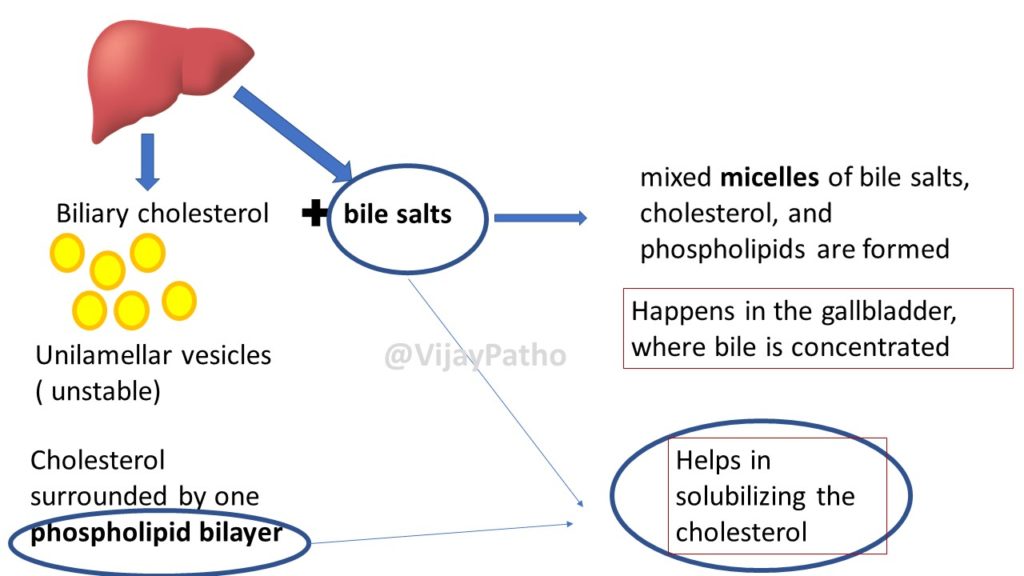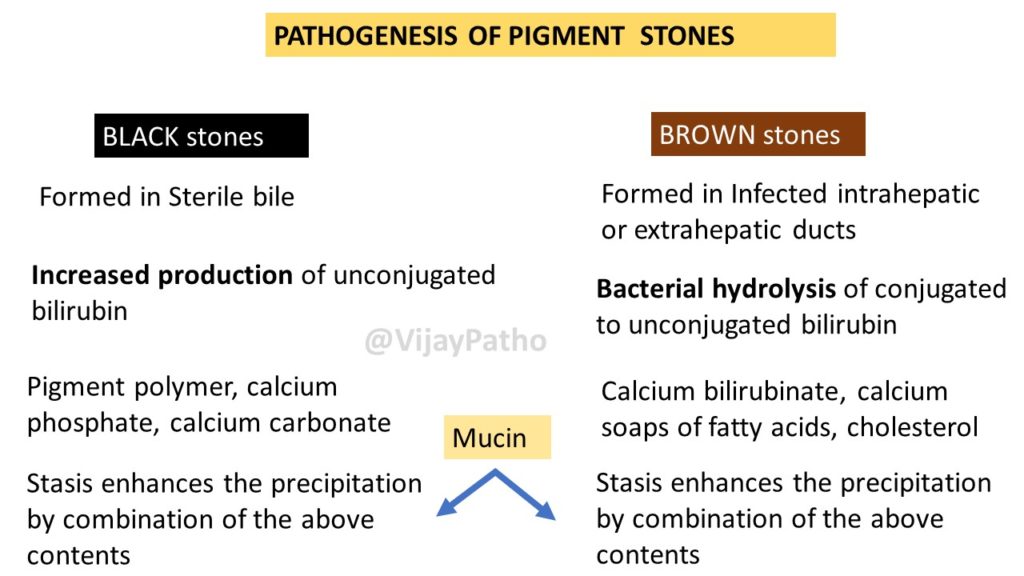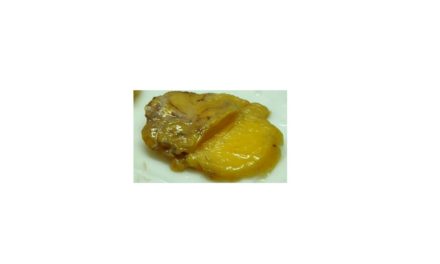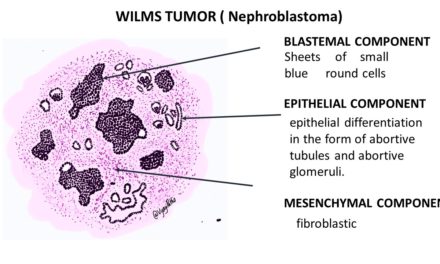Gall stones: Stones in the gall bladder. As simple as that! Also referred to as cholelithiasis, which is a Greek term when split it reads as chol- (bile) + lith- (stone) + -iasis (process).
Basially, Gall stones are conglomerates made of cholesterol crystals, mucin, calcium bilirubinate, and proteins which are of different sizes and are formed within the gall bladder.
There are two major types of gallstones right one is the cholesterol type of gallstones another is a pigment type of gallstones. Cholesterol stones are made up of crystalline cholesterol monohydrate whereas pigment stones are made up of bilirubin calcium salts.
Let’s move straight into Understanding the pathogenesis of the cholesterol type of gallstone.
To understand the pathogenesis of cholesterol type of gallstones We need to know what exactly happens under normal circumstances. we know that liver is a source of cholesterol which is in the form of uni-lamellar vesicles. The uni lamellar vesicle meaning molecule of cholesterol surrounded by one phospholipid bilayer. These uni-lamellar vesicles are unstable.
Now we know that liver also secretes bile salts.
The cholesterol which is in the form of unilamellar vesicles combines with the bile salts resulting in the formation of something called as MICELLES. These micelles are the combination of bile salts, cholesterol and the phospholipids. But this event happens in the gallbladder where the bile is concentrated. This is a mechanism which helps cholesterol to solubilize.
Hence, we now know that the phospholipids and the bile salts together results in solubilizing the cholesterol. These two are the most important components where the cholesterol is rendered soluble.
now let us see what happens when the cholesterol concentration exceeds the solubilizing capacity of the bile. See the solubilizing capacity of bile as we understood it is rendered or is it is achieved by the phospholipids and the bile salts.

So, whenever there is increased concentration of cholesterol OR whenever there is decreased synthesis of bile salts there is increased cholesterol which exceeds thesolubilizing capacity of bile and this condition is referred to as CHOLESTEROL SUPERSATURATION.
This is the most important mechanism in the formation of LITHOGENIC BILE. lithogenic means- “stone forming”.
Now, what happens when there is cholesterol supersaturation-
The Uni lamellar vesicles gets converted to multilamellar vesicles where there are multiple layers of phospholipid bilayers which then results in NUCLEATION, an another important step in the formation of gall stones. we should understand that with supersaturation cholesterol can no longer remain soluble and they ‘NUCLEATE” to form cholesterol monohydrate crystals. This is a crucial step in the formation of gallstone. At this point the content of the gall baldder is referred to ase as BILIARY SLUDGE as bile now is large is a suspension of precipitates
of cholesterol monohydrate.
For nucleation to occur there are pro nucleating factors and anti nucleating factors The mucin secreted by the gallbladder mucosa itself acts as a pronucleating factor apart from the calcium.
The various anti nucleating factors are apolipoprotein and lecithin. These are the ones which inhibits the conversion of cholesterol into cholesterol monohydrate crystals.
Now, what happens to these cholesterol monohydrate crystals over a period of time?
These monohydrate crystals further crystallize resulting in the formation of “microstones” and this stage is referred to as MICROLITHIASIS. These are microscopic crystal like structures which cannot be seen through macroscopic eyes this is called as microlithiasis. over a period of time the microlithiasis grow in size by addition of more and more core and other contents of bile resulting in the formation of a macroscopic solid structure which is now referred to as GALLSTONE.

I hope the pathogenesis of cholesterol stone made clear!
“cholesterol supersaturation and nucleation are the crucial steps in the pathogenesis of cholesterol type of gallstones”
Now, let us understand the pathogenesis of pigment type of gallstones. we know that there are two types of pigmented stones one is the black and the other is the brown stone.
Remember black stones are formed in sterile bile whereas brown stones are formed in infected intrahepatic are extra hepatic ducts.
Black stones are because of increased production of unconjugated bilirubin wherein it is composed of a pigment polymer usually unconjugated bilirubin, calcium phosphate and calcium carbonate whereas brownstones is because of bacterial hydrolysis of conjugated to unconjugated bilirubin. It consists of calcium bilirubin, calcium soaps of fatty acids and cholesterol.
Note that there is no calcium carbonate component in brown stones for the reasons not really very well understood
Stasis plays a major role as it results in precipitation of the contents of the bile Another important determinant is the presence of mucin Mucin also helps in precipitation of these components resulting in the formation of pigment stones.

So that’s it regarding pathogenesis of gall stones!
If you want to learn more about gallstones, as in morphology, clinical features, complications, you can watch them here in the link below.
CHOLELITHIASIS/ GALL STONES-Part 1: Epidemiology, Types, Risk factors.
CHOLELITHIASIS/ GALL STONES-Part 2: Pathogenesis, Morphology, Clinical Features,Complications
Enjoy Learning!











Recent Comments